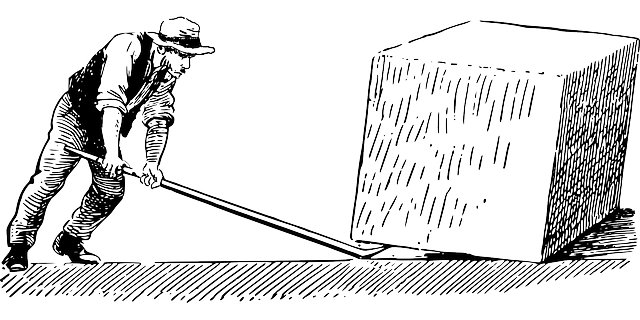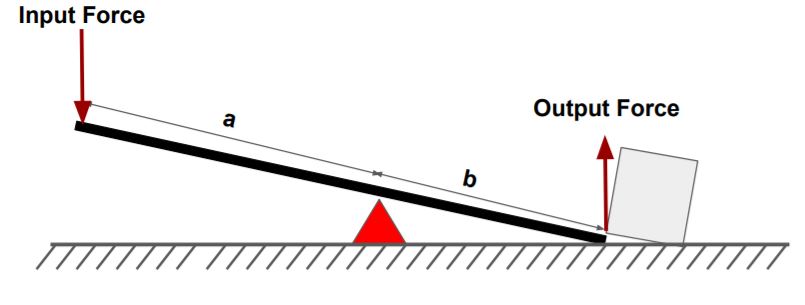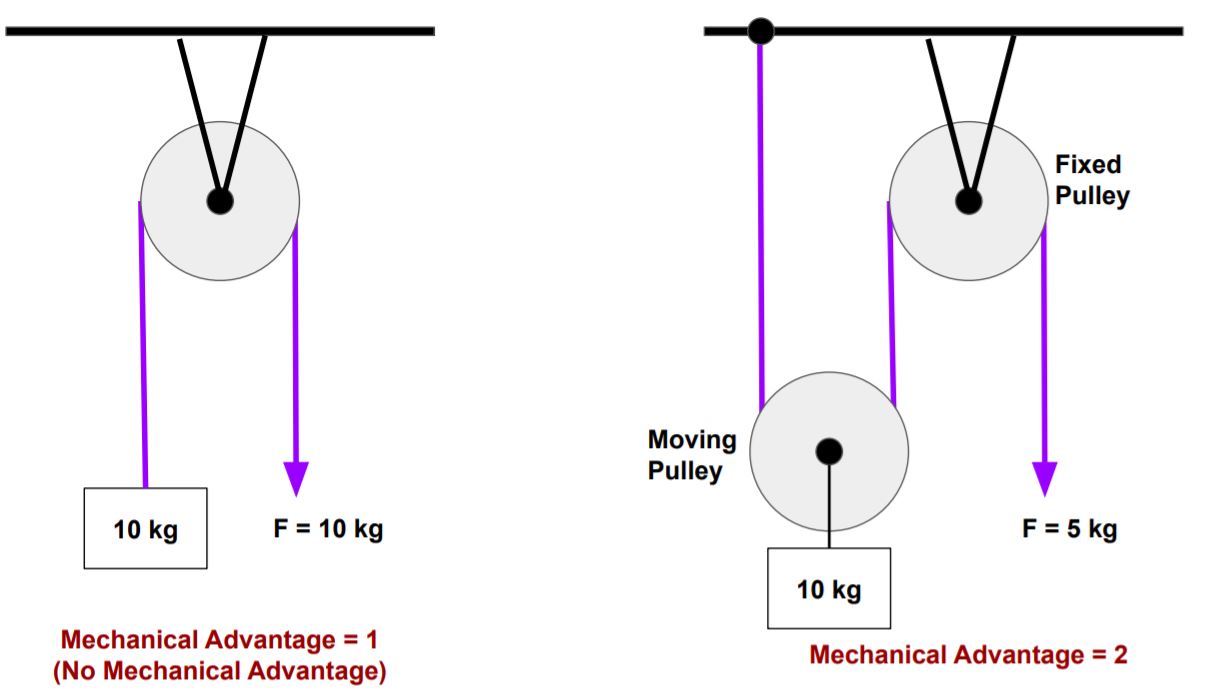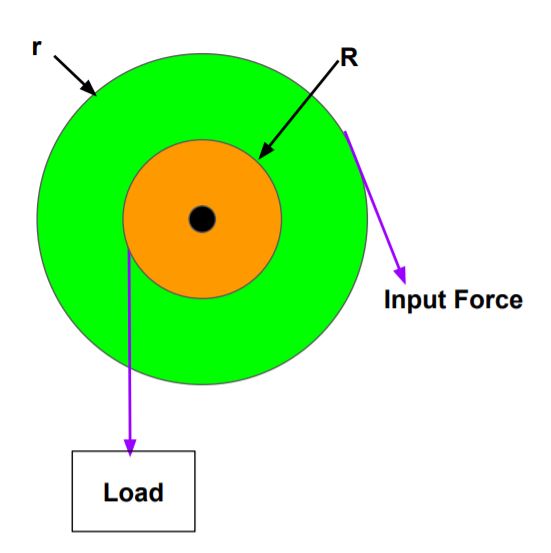Mechanical advantage or “MA” has application to lift heavy loads by applying small force or changing the direction of applied force. All simple and complex machines we use in our day to day life have some MA.
What is Mechanical Advantage?
Mechanical Advantage measures the increase in applied force when the force is applied using a mechanical device, tool, or a mechanism such as a lever, gear, or pulley system.

For example, As shown in the above image, a man lifts a heavy block using a lever. In this way, he has to apply relatively small forces to lift the block.
What is the difference between Mechanical Advantage and Efficiency?
The Mechanical Advantage of a simple machine measures how much force a Simple Machine will require to lift or move an object. The energy requirements to lift the weight can be equal to or higher than the body weight.
The efficiency of a machine is the ratio of output energy and input energy.
For example, if the MA of a pulley system is “two”, The simple machine will require a 5kg force to lift a 10kg load. But at the same time user need to move the pulley to a longer distance. This reduction in force is due to an increase in displacement. Energy requirements will remain constant.
As a result, system efficiency will remain constant because it depends on the loss of energy, not on applied force. Here energy loss can be due to frictional resistance, air drag, etc.
How to Calculate Mechanical Advantage?
Mathematically, Mechanical-Advantage is equal to the ratio of output force to the input force while following the law of conservation of energy with 100% efficiency. But in real life, systems are not perfect. There is always some energy loss.
Ideal MA Calculation Formula
According to the first law of conservation of energy, the total energy of an isolated system remains constant.
Input Energy to the Lever = Output Energy
Input Force x Input Distance = Output Force x Output Distance
Ideal MA = Output Force / Input Force = Input Distance / Output Distance
In this way, we can calculate the ideal mechanical advantage for a mechanism. Simple machines such as a lever, pulley, and gears are used in various scenarios to achieve higher forces by applying small force.
Examples of Simple machine with Mechanical Advantage Calculation
MA of a Lever

The above image shows a solid bar pivoted to lift the solid block. This arrangement has applications to lift solid bodies with relatively small forces.
Lever Mechanical Advantage = a / b = Output Force / Input Force
Mechanical Advantage of a Pulley

The force required to lift the weight in a fixed pulley is equal to the lifted weight. Therefore, system MA becomes one.
Whereas when weight is attached to one moving pulley, system MA is two. In other words, we will require 5 kg force to move a 10 kg weight.
MA of a Wheel and Axle

A wheel transfers a force to the axle when it rotates in a connected axle-and-wheel simple machine.
We can calculate wheel and axle simple machine mechanical advantage using the following formula.
MA of a Wheel and Axle = Diameter of the Wheel / Diameter of the Axle
To sum up, the MA of a machine is a unitless quantity. It measures the reduction in force to move or lift an object using a simple machine. We suggest you also read this article on the calculation of gear ratio.
